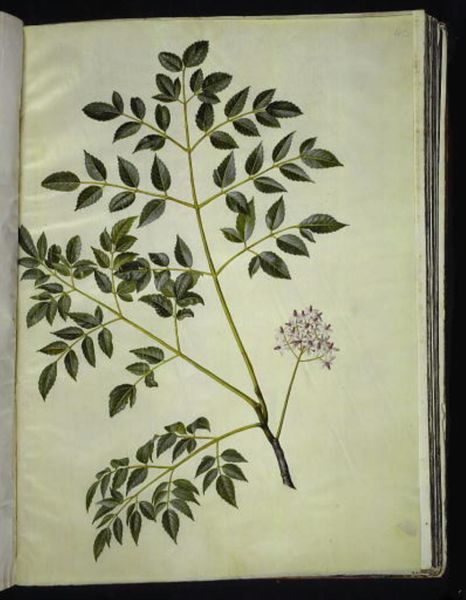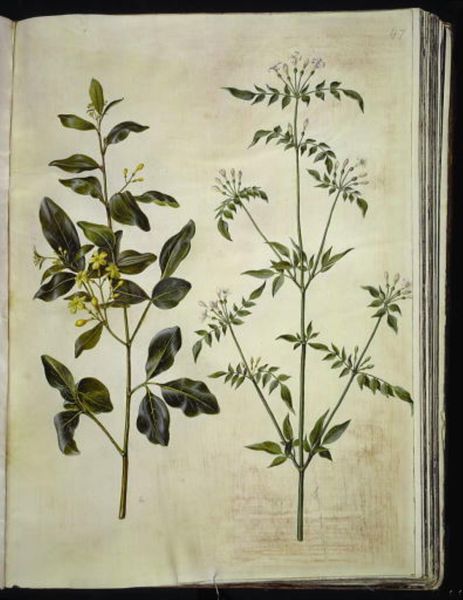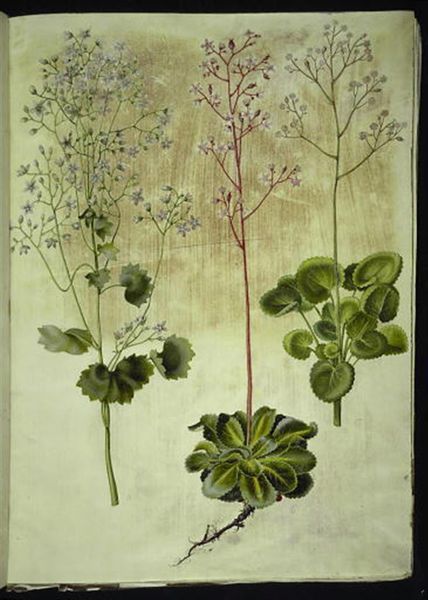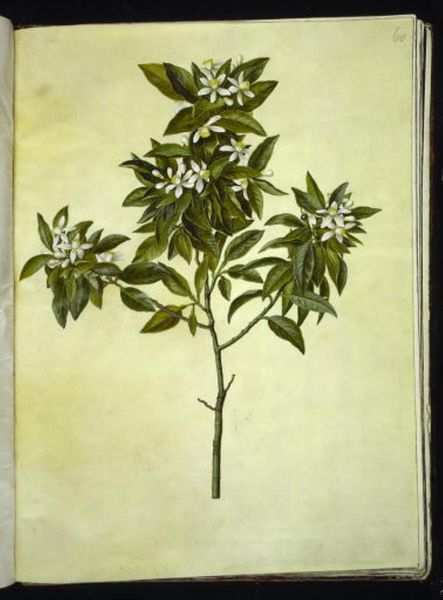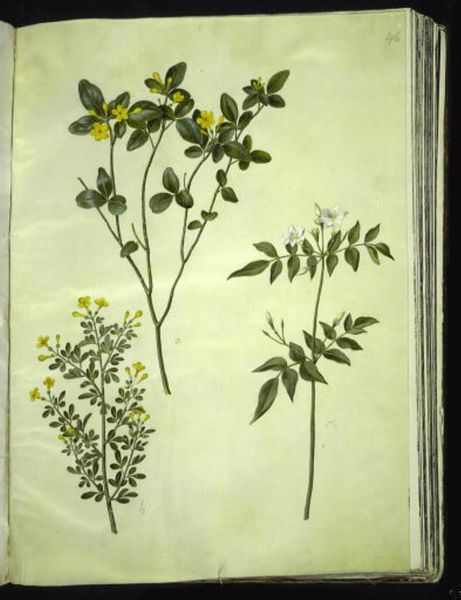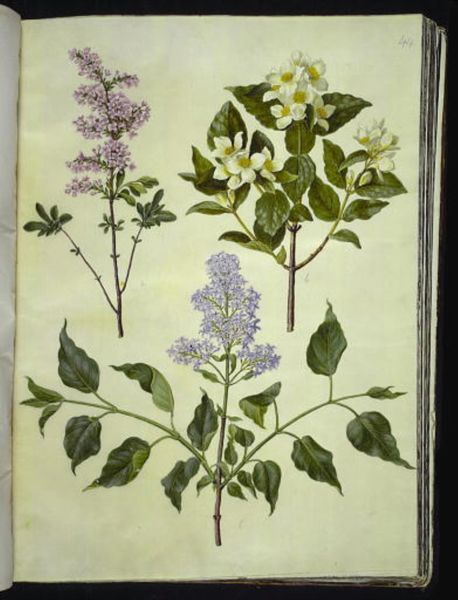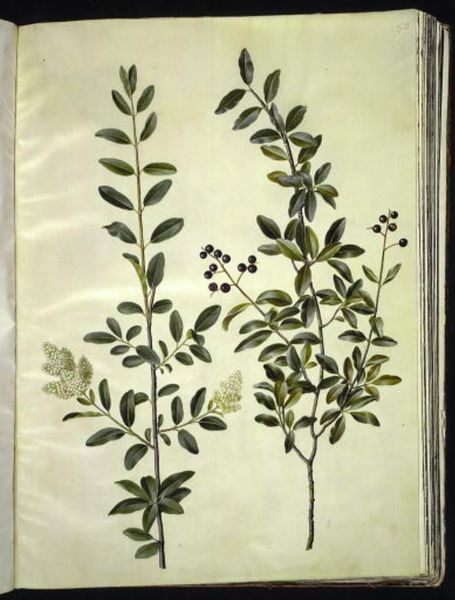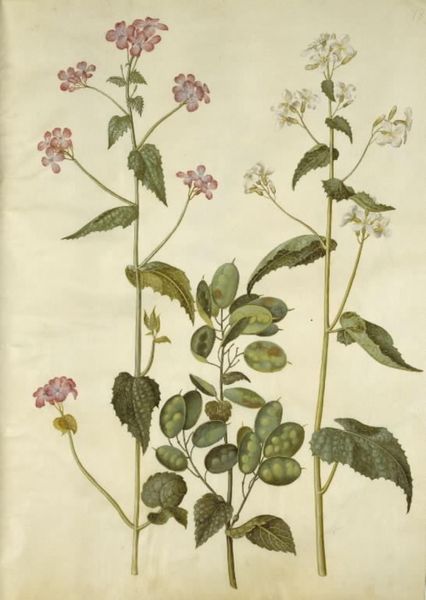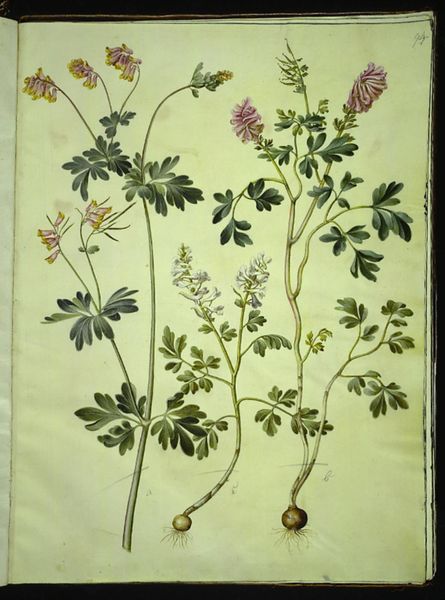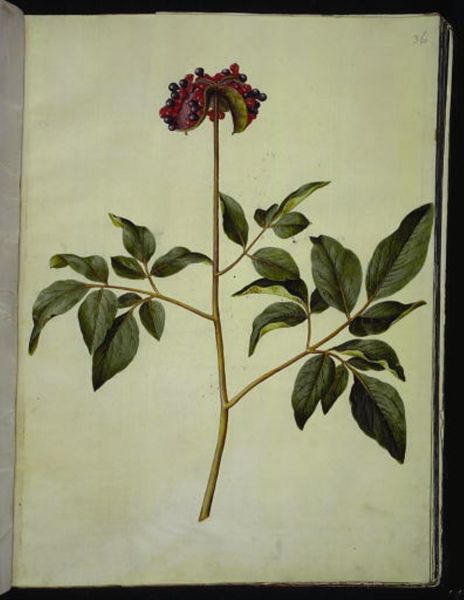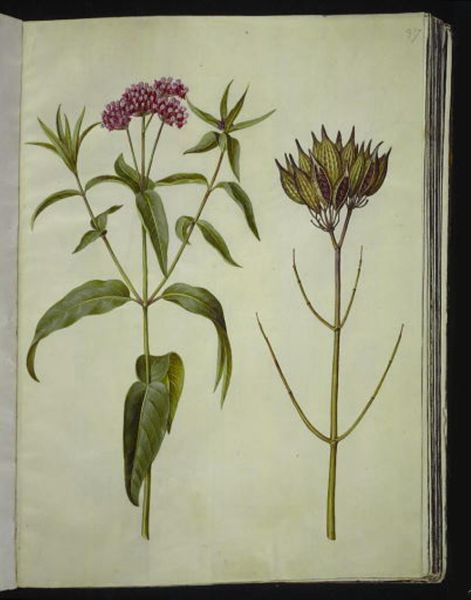
drawing, coloured-pencil, gouache, watercolor
#
drawing
#
coloured-pencil
#
gouache
#
11_renaissance
#
watercolor
#
coloured pencil
#
watercolor
Dimensions: 505 mm (height) x 385 mm (width) (bladmaal)
This botanical study of a Viburnum tinus, or winter snowball, was made by Hans Simon Holtzbecker sometime in the mid-17th century, likely using watercolors on vellum. Consider the making process: Holtzbecker would have had to source his materials – fine parchment, costly pigments – then exercise extreme control to render this plant so faithfully. The smooth surface of the vellum allows for incredibly fine detail. Note the delicate rendering of the leaves, each carefully shaded to convey volume. But this isn’t just about artistic skill; it's about the rise of empirical observation. In Holtzbecker's time, scientific knowledge was increasingly valued, and accurate depictions of the natural world were in demand, especially in newly emerging fields like botany and medicine. This kind of image was more than just pretty, it was part of a larger project of understanding and classifying the world, a project that fueled European expansion and colonialism. Ultimately, Holtzbecker’s close looking reminds us that even the most beautiful images are rooted in specific ways of seeing, knowing, and making.
Comments
No comments
Be the first to comment and join the conversation on the ultimate creative platform.

